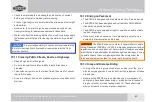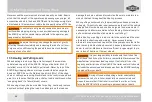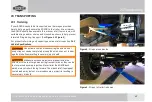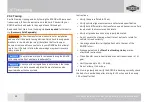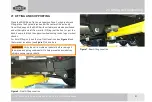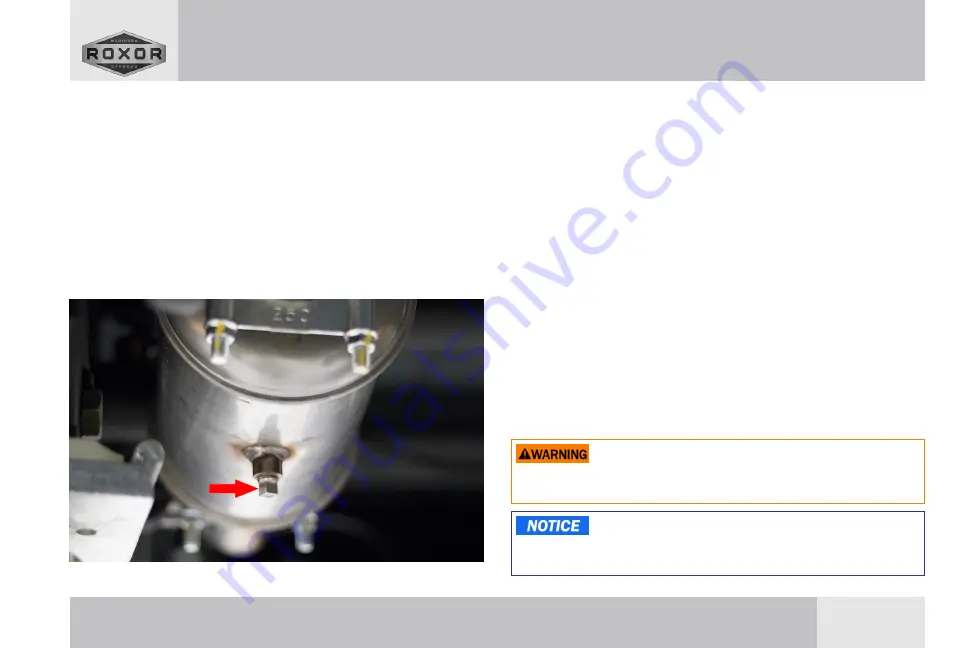
23 Maintenance Procedures
5. If carbon is expelled, partially cover the exhaust outlet and rap
on the pipe around the clean-out plug while revving the engine
several more times.
6. If particles are still suspected to be in the muffler. Block the rear
wheels, then elevate the front of the ROXOR one foot higher than
the rear. Ensure parking brake is set.
7. Repeat steps 4 and 5 until no more particles are expelled when
the engine is revved.
8. Stop the engine. Allow the arrester to cool.
9. Reinstall the spark arrester clean-out plug.
Figure 8.
Spark Arrester Clean-Out Plug
23.4 Clean and Inspect Brakes
Brake maintenance is important, not only for the obvious safety reas-
ons, but also to help preserve the wear components.
The brake system consists of six main components that should be
inspected and/or cleaned. They are the brake pads, rotors, calipers,
drums, brake lines, and master cylinder.
The wheels and tires should be remove to perform this procedure
properly. Refer to section
for instruction.
Maintenance Interval – Clean and inspect every 100 hours, 12
months, 3,000 miles (5,000 Km)
1. Check the brake system for fluid leaks.
2. Check the brake pedal for excessive travel or a spongy feel.
3. Clean and inspect the pads for wear, damage and looseness.
4. Clean and inspect the brake discs and drums for signs of cracks,
excessive wear or corrosion, warping or other damage.
5. Clean any grease using an approved brake cleaner or alcohol.
Do not apply rust inhibiting penetrating oil or other pet-
roleum based products to brake discs and drums. This could render
your braking system inoperable resulting in severe injury or death.
Generally, there should be at least a 1/4" (6.4 mm) of
brake pad. If you see less than this, you may want to replace the
pads.
© 2018 Mahindra Vehicle Sales and Service, Inc. All Rights Reserved.
57



